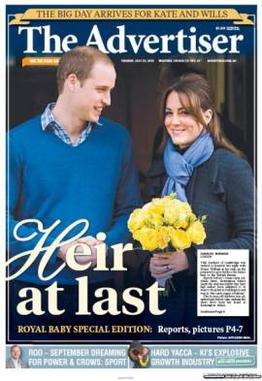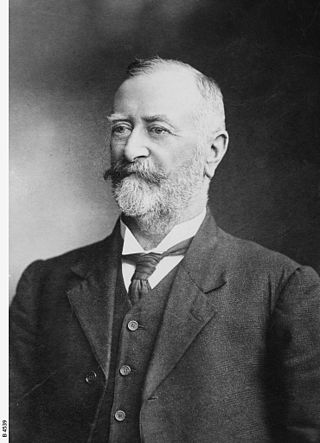Related Research Articles
The News was an afternoon daily tabloid newspaper in the city of Adelaide, South Australia, that had its origins in 1869, and ceased circulation in 1992. Through much of the 20th century, The Advertiser was Adelaide's morning broadsheet, The News the afternoon tabloid, with The Sunday Mail covering weekend sport, and Messenger Newspapers community news.

The Advertiser is a daily tabloid format newspaper based in the city of Adelaide, South Australia. First published as a broadsheet named The South Australian Advertiser on 12 July 1858, it is currently a tabloid printed from Monday to Saturday. The Advertiser came under the ownership of Keith Murdoch in the 1950s, and the full ownership of Rupert Murdoch in 1987. It is a publication of Advertiser Newspapers Pty Ltd (ADV), a subsidiary of News Corp Australia, itself a subsidiary of News Corp. Through much of the 20th century, The Advertiser was Adelaide's morning broadsheet, The News the afternoon tabloid, with The Sunday Mail covering weekend sport, and Messenger Newspapers community news. The head office was relocated from a former premises in King William Street, to a new News Corp office complex, known as Keith Murdoch House at 31 Waymouth Street.

The South Australian Open was a golf tournament on the PGA Tour of Australasia and the Nationwide Tour.

The Register, originally the South Australian Gazette and Colonial Register, and later South Australian Register, was South Australia's first newspaper. It was first published in London in June 1836, moved to Adelaide in 1837, and folded into The Advertiser almost a century later in February 1931.
The Herald was a weekly trade union magazine published in Adelaide, South Australia between 1894 and March 1910; for the first four years titled The Weekly Herald. It was succeeded by The Daily Herald, which ran from 7 March 1910 to 16 June 1924.

The Bunyip is a weekly newspaper, first printed on 5 September 1863, and originally published and printed in Gawler, South Australia. Its distribution area includes the Gawler, Barossa, Light, Playford, and Adelaide Plains areas. Along with The Murray Pioneer, The River News, and The Loxton News,The Bunyip was now owned by the Taylor Group of Newspapers and printed in Renmark.

William Harold Oliver was an Australian rules footballer. Harold Oliver was a key player to some of South Australian football's most successful teams. He starred in South Australia's victorious 1911 Australian football championship along with Port Adelaide's 1914 "Invincibles" team. After being close to retiring from the game after World War I, he returned to captain both Port Adelaide to the 1921 SAFL premiership and South Australia in a game against Western Australia. His reputation as an early exponent of the spectacular mark—along with his general skill at playing the game—saw him regarded as one of the best players South Australia has produced.
The Courier is a weekly newspaper published in Mount Barker, South Australia. For much of its existence its full title was The Mount Barker Courier and Onkaparinga and Gumeracha Advertiser, later shortened to The Mount Barker Courier.
Quiz was a weekly newspaper published in Adelaide, South Australia from 1889 to 1910. Between 1890 and 1900 it was known as Quiz and The Lantern.
The Observer, previously The Adelaide Observer, was a Saturday newspaper published in Adelaide, South Australia from July 1843 to February 1931. Virtually every issue of the newspaper has been digitised and is available online through the National Library of Australia's Trove archive service.

Alfred Searcy was a South Australian public servant and writer. He was based in Darwin from 1882 to 1896 and was a booster for development of northern Australia during and after his time there.
Truth was the name of various weekly newspapers published in Adelaide, South Australia, at times between 1890 and 1964.
The Kapunda Herald was a newspaper published in Kapunda, South Australia from 29 October 1864 to 25 January 1951. From 1864 to 1878 the masthead was subtitled "and Northern Intelligencer". It was published weekly, except for the period February 1872 to September 1894 when it appeared bi-weekly. When closed, the newspaper was merged with the Barossa News to become the Barossa and Light Herald.
The Australische Zeitung was a weekly German-language newspaper published in Tanunda, South Australia from 1860 until it ceased publication during World War I in 1916 due to anti-German sentiment. The newspaper also existed in a variety of earlier names or merged publications, reflecting the fluid nature of the newspaper industry in Victorian gold rush era colonial South Australia. The long history of German language Australian newspapers reflects the considerable German-speaking population which settled in South Australia in the nineteenth century.
The Leader is a weekly newspaper first published in Angaston, South Australia on 24 July 1918, and continues to the present day to be published in the Barossa Valley. It was the first English-language newspaper covering any part of the Barossa Valley, apart from the Kapunda Herald.
The Telegraph was a newspaper in Adelaide, South Australia, founded in 1862, and merged with The Express to become The Express and Telegraph, published from 1867 to 1922.

Edward Sidney Kiek was a Congregationalist minister, and principal of Parkin College, that church's seminary in Adelaide, South Australia. He was married to Winifred Kiek who was in 1927 the first woman to be ordained minister of a Christian church in Australia.
William "Bill" Sheppard was a veteran racehorse trainer in the Colony and State of South Australia.
John Clarence Neate, generally known as Clarrie or Clarry Neate, was a South Australian racehorse trainer and cartoonist, known for caricatures of sporting identities in The Sport weekly newspaper.
Frank Marlow was a long-serving administrator of Australian rules football in South Australia; as secretary of South Adelaide Football Club and of the South Australian National Football League (SANFL).
References
- ↑ ""The Sport's" Song". The Sport. Vol. XXIX, no. 1442. South Australia. 22 July 1938. p. 7. Retrieved 11 September 2017– via National Library of Australia.
- ↑ "Fred Jennings dies at 66". The News (Adelaide) . Vol. 51, no. 7, 892. South Australia. 19 November 1948. p. 6. Retrieved 11 September 2017– via National Library of Australia.
- ↑ "Trainer and Cartoonist". The Sport. Vol. XXVI, no. 1328. South Australia. 8 May 1936. p. 11. Retrieved 11 September 2017– via National Library of Australia.
- ↑ Laube, Anthony. "LibGuides: SA Newspapers: M-N". guides.slsa.sa.gov.au. Retrieved 17 August 2018.
- ↑ The northern sportsman [newspaper]. Rose Park, S. Aust: Fred J. Jennings. 1924.
- ↑ ""Sport" Newspaper Changes Hands". The Advertiser (Adelaide) . South Australia. 16 November 1946. p. 2. Retrieved 11 September 2017– via National Library of Australia.